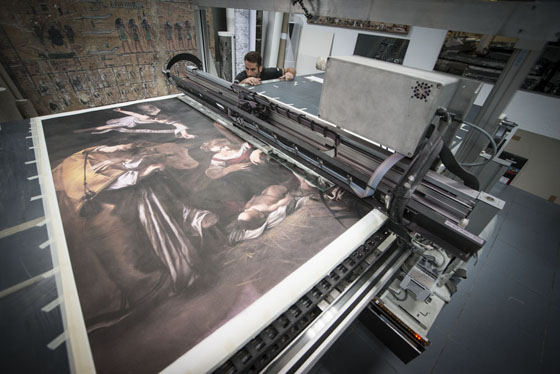Wednesday 30th November 2016
We recently wrote an edition of Artist Spotlight that featured the work of a young boy hoping to recreate the lost works of his cultural heritage as a means of fighting back against the devastation caused by the fanatics of the Islamic State. It was a touching story, and one that brings hope to the fight against the IS, but today we're going to look at a much more industrialized version of that struggle.
Welcome to Factum. This is a cutting-edge (literally, excuse the pun) factory that provides a number of artistic services, including working with big-name sculptors such as Anish Kapoor Maya Lin and Marc Quinn to realize their visions when the technical requirements are outside the artist's native capabilities.
That's not all they do, however- they also reconstruct pieces of cultural history that were destroyed by various terrorist groups or in other types of disaster.
They are incredibly talented, and incredibly perfectionist about it. The man in charge of Factum's replication services is Adam Lowe, and recently he went to see another firm's replica of a sculpted marble arch that was destroyed in Palmyra, Syria, also by the Islamic State terrorists.
Speaking to the New Yorker, he explained his distate: “If you look at the arch, there are these beautiful Corinthian columns on it, and on the finial it looks like there’s an artichoke on it. You can just tell that one of the people making it was, like, ‘That’s too hard right there,’ and simplified the shape! It’s appalling.”
As the author of the New Yorker piece opines, many people would first recall Walter Benjamin and the value (or lack thereof) in a replicated object - but can that really hold true when the original no longer exists? Perhaps there is a new 'aura' constructed around this object, even if it tempered by the knowledge that it isn't hundreds or thousands of years old.
Lowe, however unsurprisingly, disagrees again. "Factum is a place of atemporal creativity. People always say, ‘Isn’t it difficult working with contemporary artists and working with, say, Caravaggio?’ The answer is no. They’re exactly the same. The only difference is that Caravaggio is dead.”
Hopefully, they will be able to use incredibly sophisticated computer modelling technology to reconstruct objects from images, even when the original has long since been destroyed. Too much of the world's beautiful objects have been lost over the years, whether to willful destruction, simple negligence, or pure chance. The prospect of having them back with us is a wonderful one to envision.
Posted on November 30th 2016 on 02:31am
 We recently wrote an edition of Artist Spotlight that featured the work of a young boy hoping to recreate the lost works of his cultural heritage as a means of fighting back against the devastation caused by the fanatics of the Islamic State. It was a touching story, and one that brings hope to the fight against the IS, but today we're going to look at a much more industrialized version of that struggle.
We recently wrote an edition of Artist Spotlight that featured the work of a young boy hoping to recreate the lost works of his cultural heritage as a means of fighting back against the devastation caused by the fanatics of the Islamic State. It was a touching story, and one that brings hope to the fight against the IS, but today we're going to look at a much more industrialized version of that struggle.



